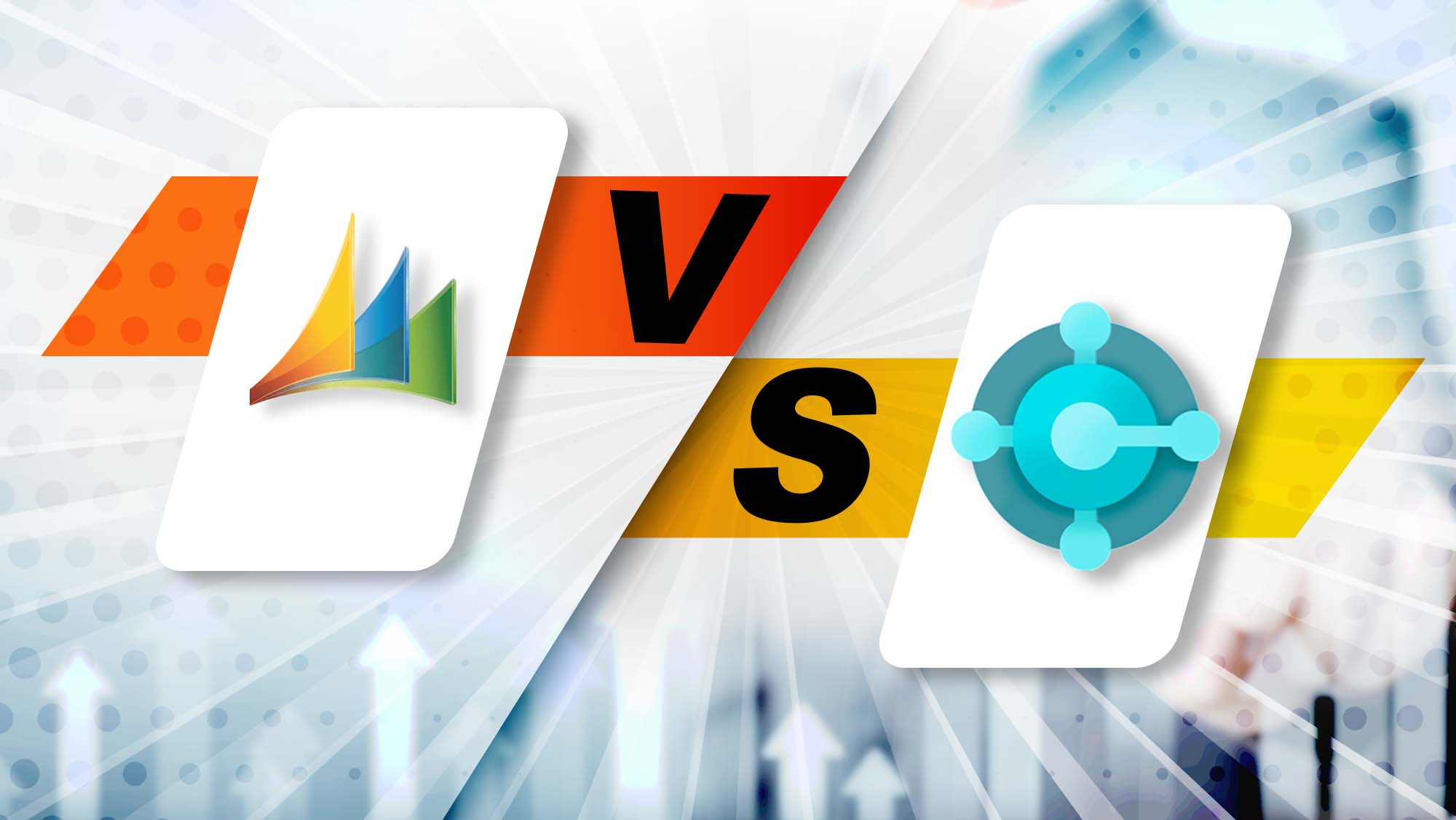Table of Content
Worldwide Digital disruptions are modifying the way businesses operate. To keep up with the ever- evolving business landscape, Microsoft, for instance, continues to enhance the features of its wide range of accounting software, including Dynamics NAV, Dynamics GP, and the most recent and advanced Dynamics 365 Business Central (or D365 Business Central). These ERP solutions comprise a core set of functionalities that assist growing small and medium- sized businesses (or SMBs) manage finances, customer service, sales, operations, projects, and the supply chain.
Enterprises worldwide trust Dynamics GP as a consistent ERP (Enterprise Resource Planning) system that Microsoft continues supporting. However, Microsoft’s cloud- first, ultra- connected business solution, Dynamics 365, encourages businesses to upgrade to Business Central. Dynamics 365 Business Central integrates business processes and customer engagements that allow quick decisions in real time while delivering unmatched security and performance features through on the cloud hosting that helps organizations enhance operational and production capabilities.
Therefore, most existing Dynamics GP customers have already started transitioning to Dynamics 365 Business Central. The reasons for the upgrade are numerous – rising expenses for Dynamics GP’s Hardware and Server maintenance; increasing resource requirements of the system; and growing need for productivity enhancing features, including mobile access and data analysis. The write- up will help compare and contrast both ERP solutions for a business need based decision.
Dynamics GP vs Dynamics 365 Business Central - Licensing and Hosting
Dynamics GP is primarily available through perpetual licensing and includes upfront software costs and yearly maintenance fees, while upgrades are not included in the application costs. Dynamics GP on- premise upgrades include significant services and resources that add to the budget. Dynamics GP limits how many users logged into the system, not how many are licensed are there in total. Besides, the available monthly licensing subscription is not as popular.
Dynamics GP users may choose to deploy the ERP on their servers or host it in the cloud through infrastructure as a service (or IaaS) provider. However, Dynamics GP deployment on IaaS does not make it a true cloud ERP, as the application is not purpose- built for web accessibility, while upgrades are not automatic as available in Business Central.
Pros
- Flexible one time or monthly licensing options
- Total infrastructure control
- Multiple users access
Cons
- Expensive, complicated upgrades
- Additional infrastructure maintenance and upgrade costs
- No true SaaS supported option
Business Central is a true cloud ERP, hosted on Microsoft Azure and licensed as SaaS, thus supporting automated, budget friendly updates to the latest features and tools. Dynamics 365 Business Central includes two subscription options, Premium and Essential, named users that are same across the license. Compared to Dynamics GP, named users require individual user licenses to access the system at any given time. Business Central also has an on- premise model for enterprises that prefer to host and manage the system internally on the local infrastructure.
Pros
- Automatic enhancements and cost- effective upgrades
- Seamless accessibility and on the cloud capabilities
- No infrastructure (hardware, server, IT) costs
Cons
- License is a must for named users
- License types must be the same across the organization
Dynamics GP vs Dynamics 365 Business Central - Functionality and Integrations
Dynamics GP offers segmented accounts structures with core financial capabilities, including Payroll, eBanking, Fixed Assets, Inventory Tracking, Multi Currency, Multiple Entities, and Purchase Orders (including requisitions) with Manufacturing and Services but excluding Warehousing.
Dynamics GP manages financial reporting through Management Reporter, Independent Software Vendor (ISV) tools, and Jet Reports. The ERP also includes Jet Basics as free. Users, however, would need a paid version to use additional features. Users can leverage the Budgeting feature through manual spreadsheets or a purchased tool.
Power BI integrations are possible in Dynamics GP with specialized resources and additional costs, specifically in data modeling, while integrating Dynamics CRM involves customized implementations.
Pros
- US and Canadian Payroll included
Cons
- Integrations with Power BI and CRM involve efforts and costs
- Budgeting and Warehousing features not included
Business Central delivers flexible, reporting friendly dimensional account structures with core financials tools, including Fixed Assets, eBanking, Inventory Tracking, Multi-Currency, Multiple Entities, Purchase Orders, Warehouse Management, and with the Premium licensing – Manufacturing, and Services. Basic Budgeting functionality is in- built, while Payroll is possible through additional applications. Business Central also enables automated and scheduled reconciliations, cash flow projects, and seamless integrations for warehousing capabilities with barcoding, handheld scanners, and shipping for simplified business operations.
Business Central ensures quick and seamless integration with Power BI for interactive, visual dashboards. Built in Customer Relationship Management or CRM aspects allow users to extend those features with additional sales, customer service, field service, and support tools in AppSource for minimal effort.
Pros
- Seamless and user- friendly Power BI and Dynamics CRM integrations
- Includes standard Budgeting and Warehouse Management features
- Automated reconciliations and cash flow projections
Cons
- Payroll needs an additional application
Dynamics GP vs Dynamics 365 Business Central -Accessories and Tools
Since its existence around 1993, Dynamics GP has developed an extensive network of partners and ISVs who offer tools for Dynamics GP. These highly integrated add- ons cover specific business needs, including barcoding, business intelligence, credit card processing, advanced manufacturing, and more. The add- ons, however, require different backend development and are managed separately. The starter or base Dynamics GP module includes core financial and distribution functionality, while users can purchase additional packages for manufacturing, customizations, and advanced payroll/ HR.
Pros
- Starter Pack includes core financial functionality
- Flexible and robust supplement tools
- Large network of ISVs
Cons
- No consistent platform to access add- ons
- New add- on market for GP is slowing down with most providers switched to Dynamics 365 already
Business Central’s extended functionality and tools are seamless to integrate with existing systems. Handy Extensions help build Business Central add- ons easily, while these business applications are available for trial and purchase Microsoft AppSource. This centralized app platform allows users to install apps for Business Central, Power BI, and more. Emerging SMBs, therefore, are fast switching to Microsoft Dynamics 365.
Pros
- Consistency of two functionality types across the organization
- A fast growing range of add- ons
- A steady platform for third party apps through AppSource
- Add- ons update seamlessly with Business Central
Cons
- Some tools are available and found separately but not on AppSource
Dynamics GP vs Business Central - features based differences in both the ERPs
| Dynamics GP | Dynamics 365 Business Central | |
| Licensing | Perpetual or Subscription | Software as a Service (SaaS), Perpetual Available |
| Users | ‘Full’ User or ‘Limited’ User, Concurrent usage based | ‘Premium’ or ‘Essentials’ Named Users |
| Hosting | Third Party On- Premise or IaaS with additional monthly costs | Microsoft Azure included in SaaS Pricing, On-Premise Optional |
| Add-Ons | Extensive Network of ISV Add-Ons – Available Through Partners, Not Many New in Market | 3rd Party Apps – Quickly Growing Availability on Centralized AppSource |
| Core Financials GL Structure | Segments | Dimensions |
| Functionality | GL, Payroll, eBanking, Fixed Assets, Inventory Tracking, Multi-Currency, Multiple Entities, and Purchase Orders (including requisitions), Manufacturing, and Services | GL, Budgeting, eBanking, Fixed Assets, Inventory Tracking, Multi-Currency, Multiple Entities, Purchase Orders, Manufacturing, Services, Warehousing, Automated Reconciliations, Cash Flow Projections, Scanning/ Bar Coding/ Shipping Integrations |
| Power BI Integration | Available – Significant Effort for Integration | Available – Out-of-the-Box Dashboards (Power BI Reports Embedded) and Little Effort for Integration |
| Microsoft Dynamics CRM/ 365 Sales Integration | Available – Significant Effort for Integration using Third-Party Tools | Available – Little Effort for Integration |
Should Modern Businesses Upgrade from Dynamics GP to Business Central?
Worldwide enterprises are opting to upgrade to Dynamics 365 Business Central from existing Dynamics GP due to cost savings, accessibility, automated upgrades, and consistently evolving features that help streamline operations.
Understanding the business needs of our patrons is a top priority. After working with numerous clients, team Dynamics Square has developed best practices and intelligent solutions to eliminate potential concerns with ERP implementations.
Engage Today to learn more about our one implementation approach with best practices for upgrading Dynamics GP to Dynamics 365 Business Central.

Witness a scalable transformation
Experience real-time synchronisation and flexibility with a consistent view across your business.
Disclaimer– “All data and information provided on this blog is for informational purposes only. Dynamics Square / MPG Business Information Systems Pvt. Ltd. makes no representations as to accuracy, completeness, currentness, suitability, or validity of any information on this site and will not be liable for any errors, omissions, or delays in this information or any losses, injuries, or damages arising from its display or use.”













